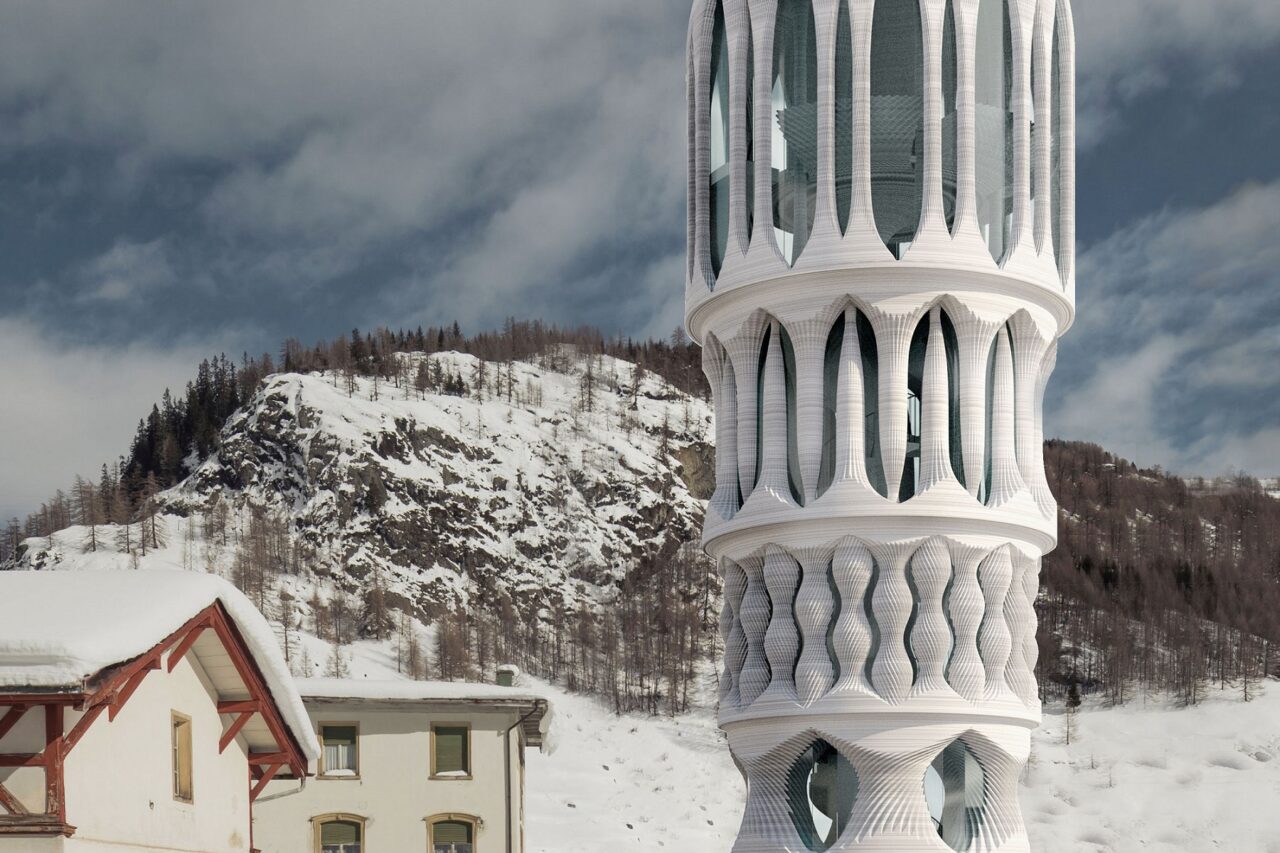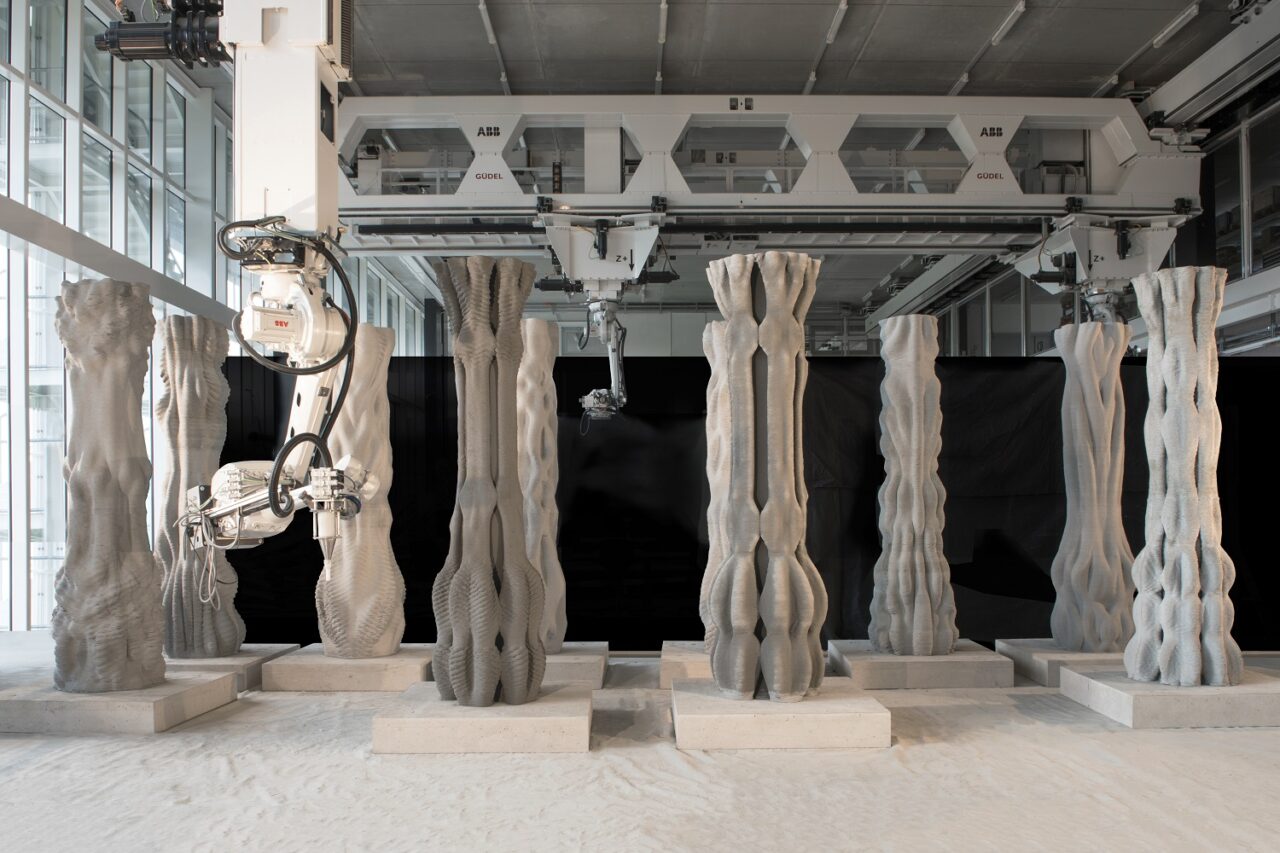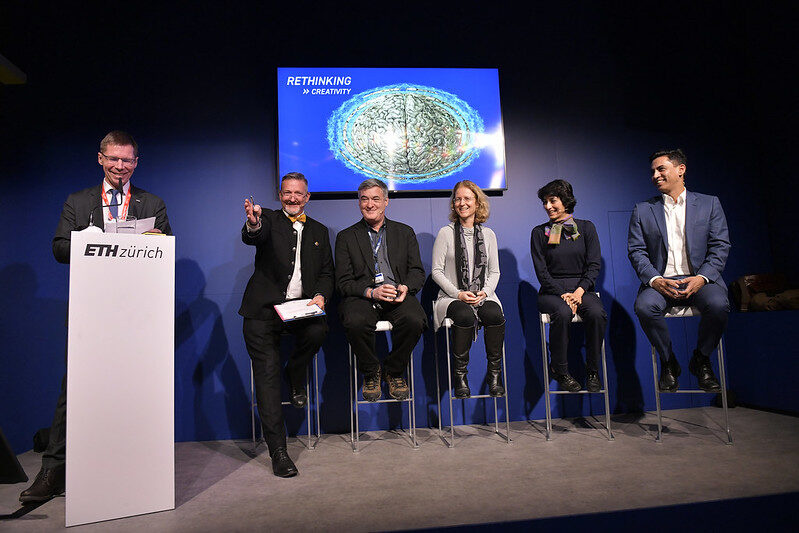One of the challenges of making construction more sustainable is that the industry tends to be cautious and conservative. Long investment periods, a myriad of regulations, and tried-and-true existing methods give little incentive for change. Add in low energy prices and you have a sector that has faced little financial pressure to reduce CO2 emissions.
This building is changing construction for the better
by Shane Richmond, 14 January 2020
Researchers are developing innovative technologies to meet the demand of the construction industry in more sustainable ways. Many of them come together at a special building just outside of Zurich.
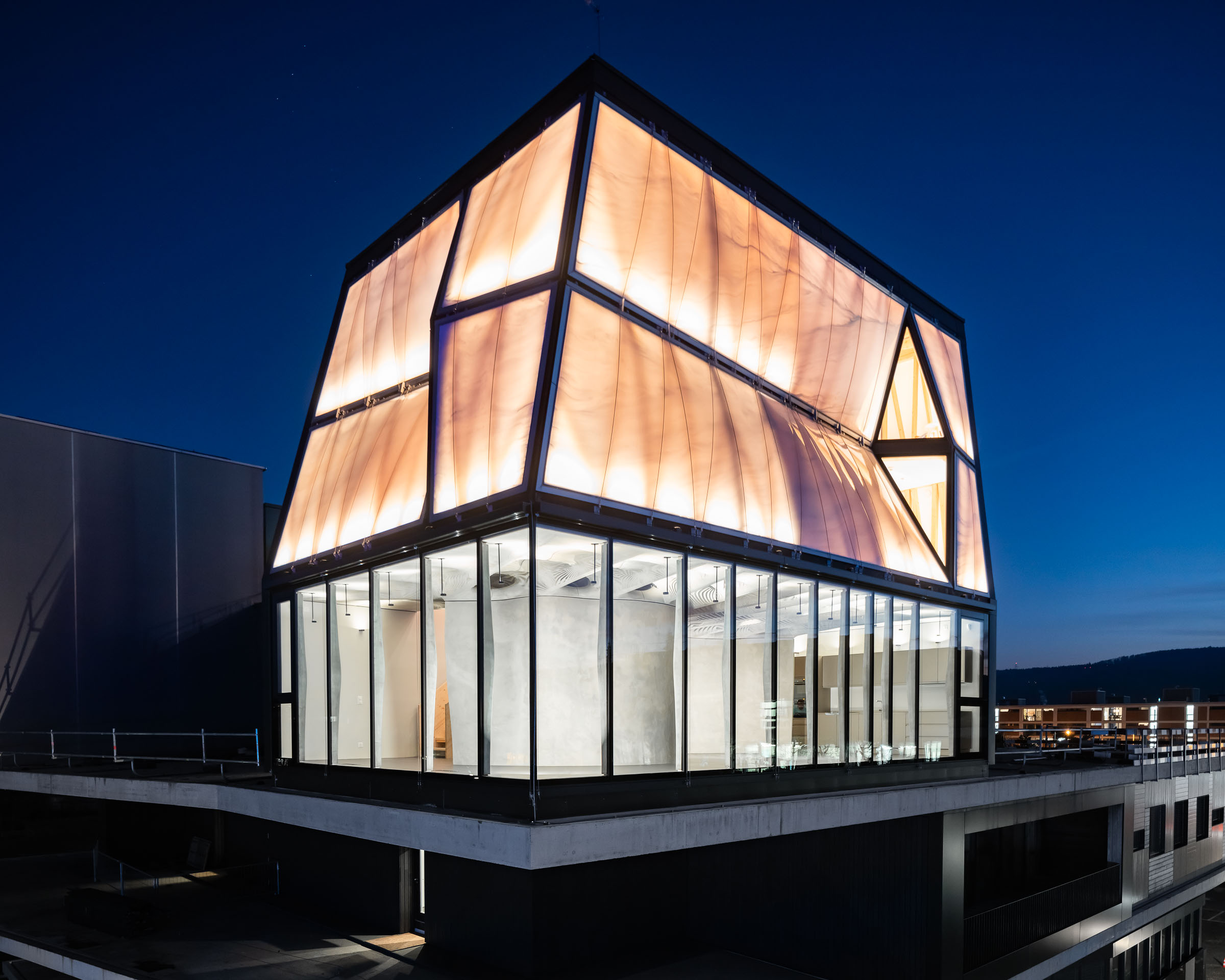
DFAB HOUSE and the NEST building illuminated against the night sky. Photo: Roman Keller
However, there is, arguably, a tremendous need for manufacturing processes that produce less greenhouse gas and more sustainable ways to use materials. That might mean finding new ways to use alternatives to concrete, the production of which has an enormous environmental impact. Where concrete is unavoidable, it could mean finding ways to use less and use it more efficiently.
Empa, the Swiss Federal Laboratories for Materials Science and Technology, which is a part of the Swiss Federal Institutes of Technology (ETH), has been testing precisely those kinds of innovations at its NEST building in Duebendorf, a city about 10 kilometres outside of Zurich.
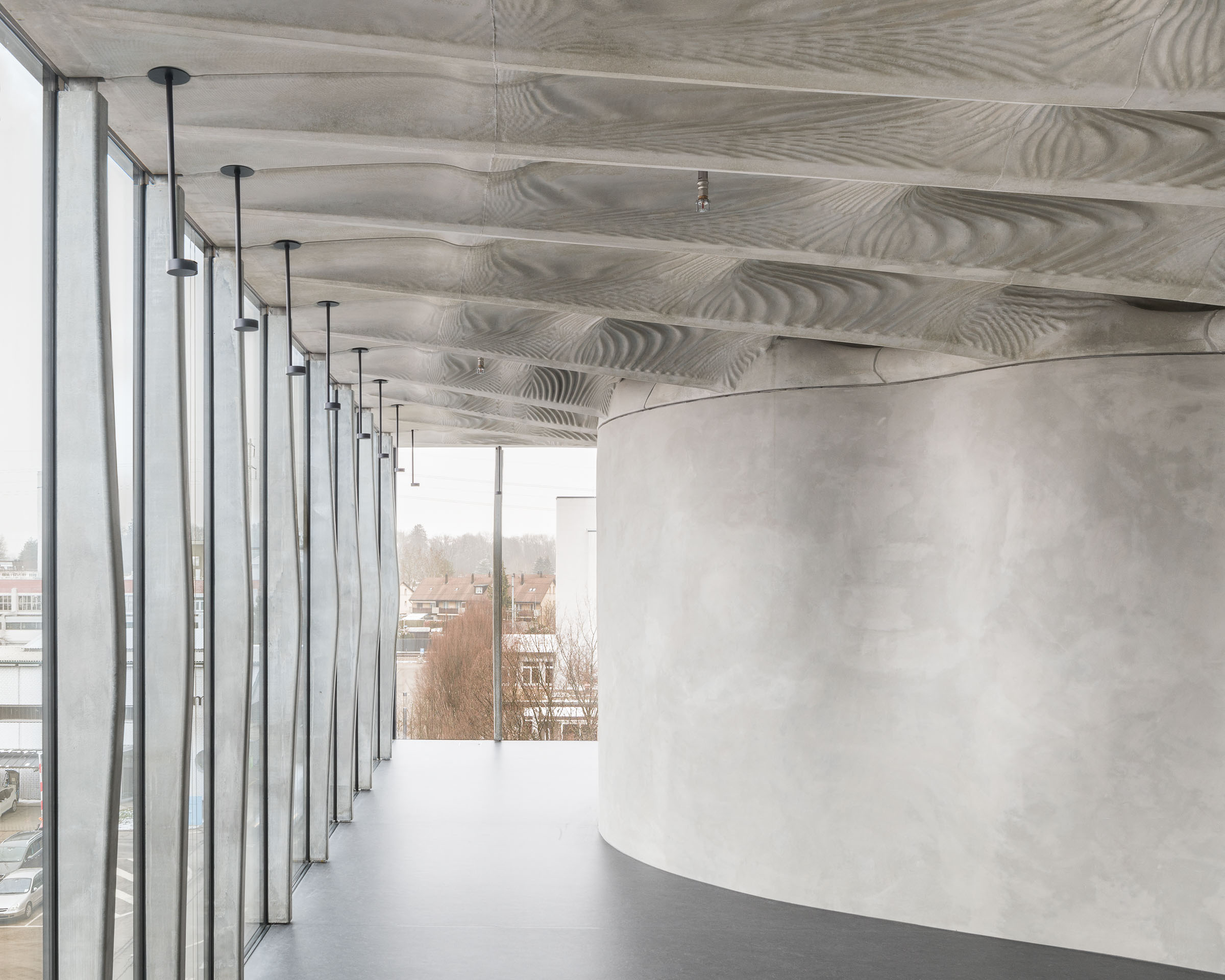
On the ground floor of DFAB HOUSE 15 bespoke, digitally fabricated concrete mullions line the façade, while the freeform Mesh Mould wall supports the load of the Smart Slab. Photo: Roman Keller
A Digitally-Constructed House
Empa, which has its roots in the late 19th Century, is focused on solutions to the sustainability problems facing modern society. The NEST (Next Evolution in Sustainable Building Technologies) building has a central 'backbone' supporting three large, open concrete platforms forming the largest and most flexible testing platform in Europe.
All kinds of modules can be built on these platforms, to test, tweak or demonstrate new technologies in realistic conditions. NEST brings together research teams from universities, architectural firms, and construction companies from across the world.
For example, the DFAB House, a three-storey structure on the top of the NEST building, is the world's first residential building to be digitally planned and (predominantly) digitally built, too, using robots and 3D printers. Constructed in partnership with digital fabrication experts from ETH Zurich, the House demonstrates technologies such as the Smart Slab, a concrete ceiling that is thinner, lighter and uses less material than a traditional ceiling.
Meanwhile, a technology known as Spatial Timber Assemblies allows wooden structures with high stiffness in all directions, but without any need for additional reinforcement plates. Since completion, the House continues to be used to research the benefits and challenges of life in a learning digital home.
Testing Modules with Real Work and Play
Other innovation modules include the Solar Fitness and Wellness unit, a gym that runs on solar power and uses physical exercise to generate electricity, and the HiLo research and innovation unit, which demonstrates the potential of developments such as lightweight construction to use 70 percent less material than a conventional concrete floor.
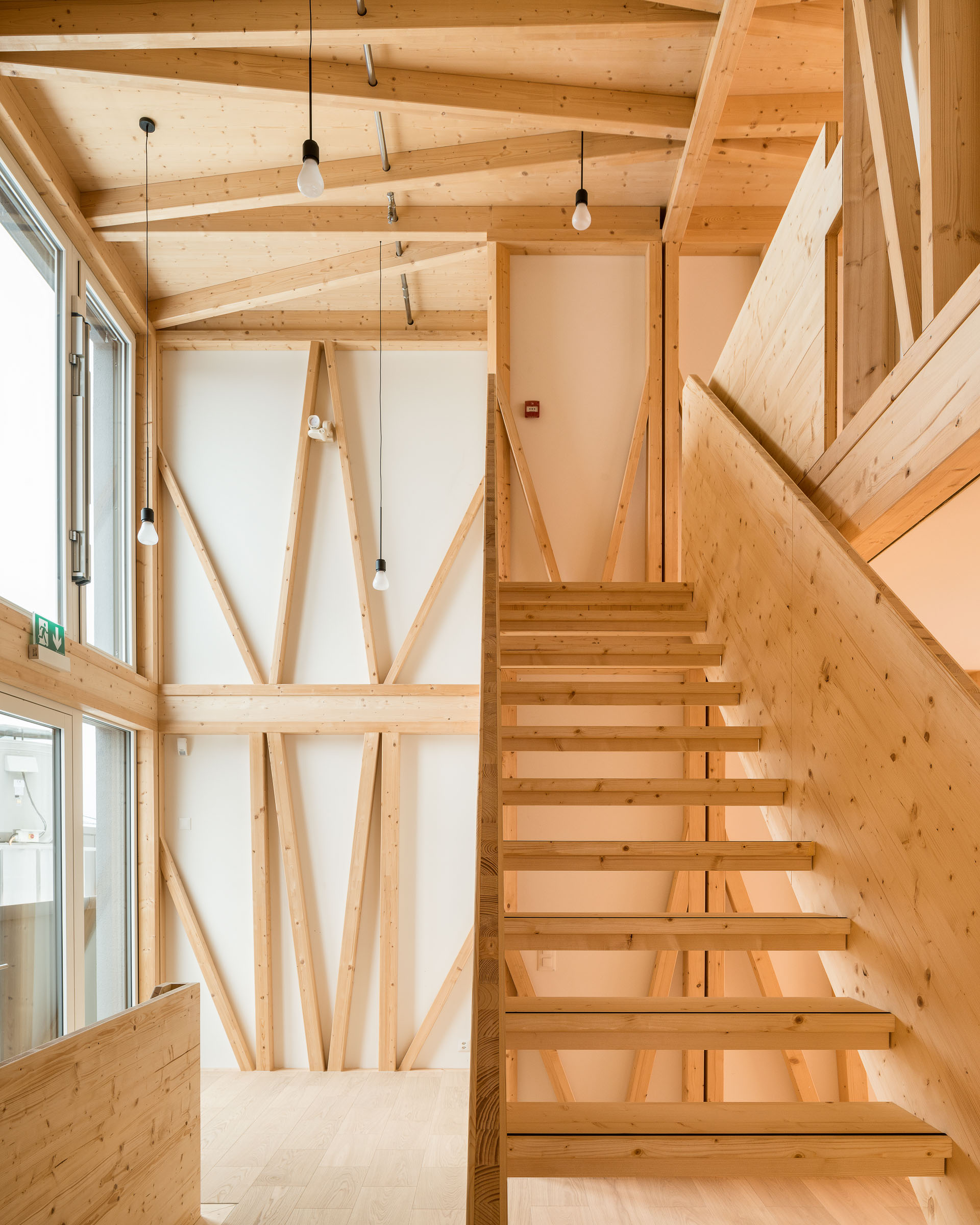
Spatial timber assemblies enable unique geometries at DFAB HOUSE. Photo: Roman Keller
In the Vision Wood unit, experts research new functions and properties for wood-based materials, such as hydrophobic wood, antimicrobial wood surfaces, and even magnetic wood.
Each module can be installed on a 'plug-and-play' basis, with research done on an open innovation basis - emphasising collaboration and transparency, rather than a secretive, siloed approach. People live and work in the units, many of which are used as laboratory spaces, so that they can be tested in realistic conditions.
NEST has around 1,000 visitors per month - over 80 per cent of whom are building and energy sector experts, many from abroad, who will learn about these new materials and technologies and take this knowledge back to their own projects. Many of the technologies, including some developed in Vision Wood, are already in use commercially.
There are many new technologies with promising applications for the future of construction and it isn't clear which ones will become commonplace in the coming years. However, it's highly likely that whichever technologies succeed, they will have at some point been tested in the NEST building.

